6 Books to Scare the Bejesus Out of You
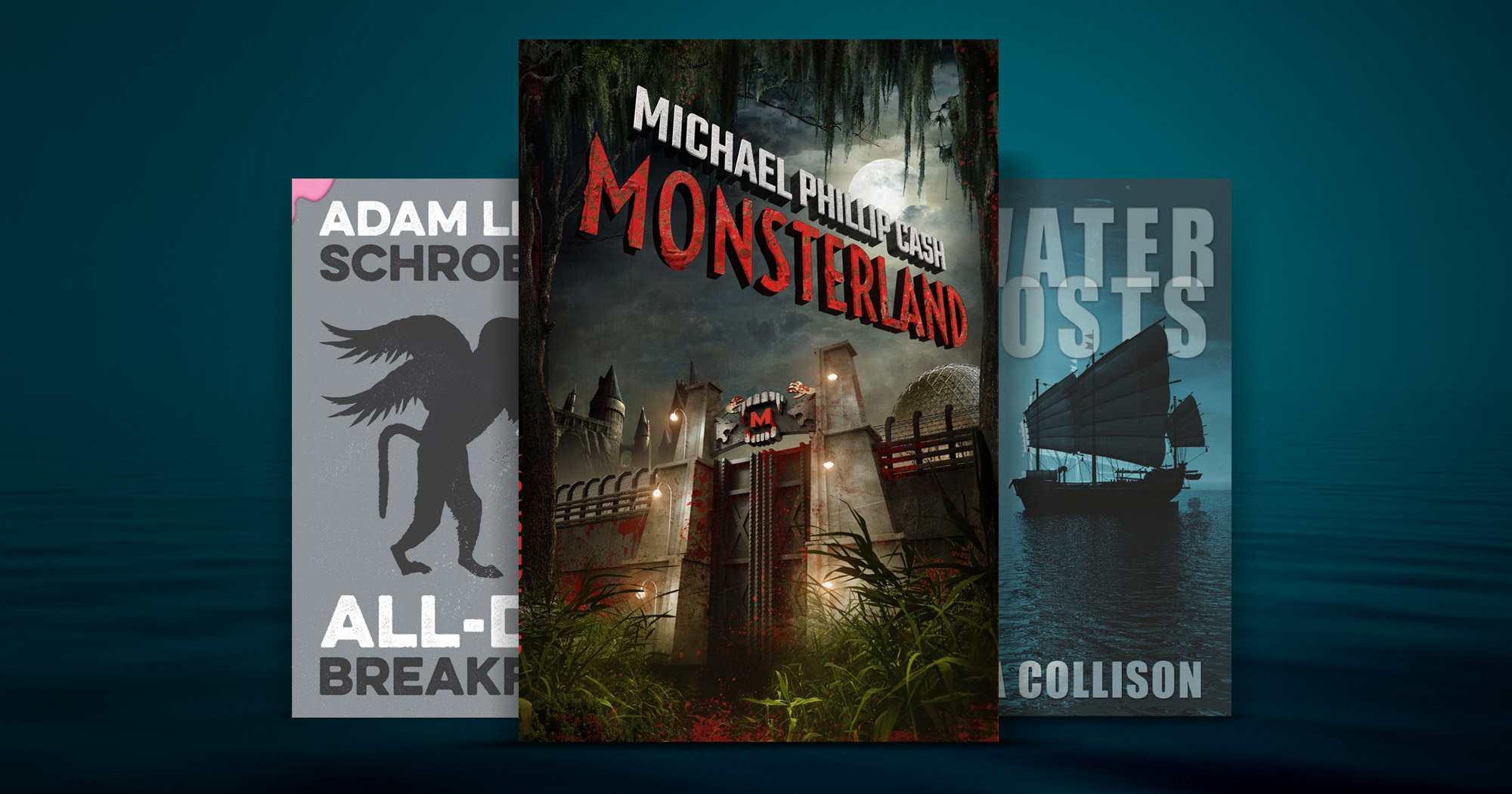
October—the month of pumpkin spice lattes and cozy sweaters. Oh, and terrifying horror books, filled with the scariest ghosts, goblins, and ghouls you’ve ever seen. It is the month of Halloween after all. If you’re craving some guts and gore with a healthy dose of mind-bending perspective, then any of these six books will do. Warning: don’t read with the lights off.
The Fisherman
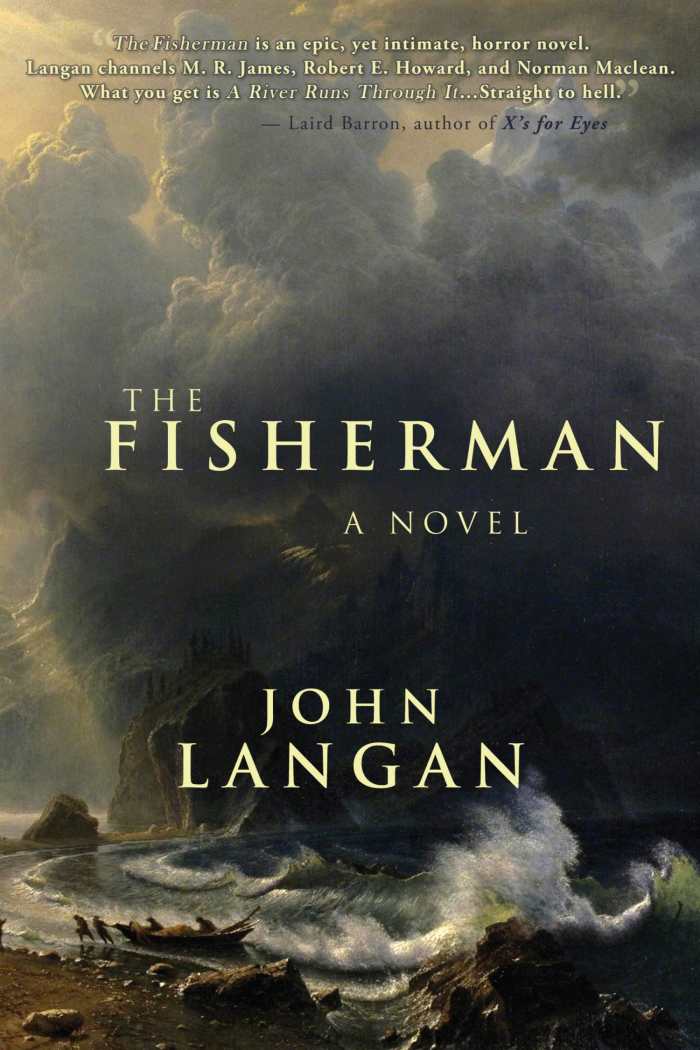
John Langan
Word Horde
Softcover $16.99 (282pp)
978-1-939905-21-5
Buy: Local Bookstore (Bookshop), Amazon
The Fisherman, with its spine-tingling pleasures, represents the best of what a horror novel can offer.
The Fisherman unfolds with exquisite slowness as a three-part tall tale. The first portion introduces the narrator, Abe, and his friend Dan, two widowers who find solace in fishing the waters of upstate New York together. When Dan decides he wants to fish a little-known spot called Dutchman’s Creek, Abe has no objections. Along the way, they hear a story while waiting out a rainstorm in a diner; this story comprises the second part of the book. It is a tale of dark magic and death, centered around Dutchman’s Creek and a sinister character known as Der Fisher. Finally, the book follows Dan and Abe as they continue on their fishing trip, making discoveries along the way.
The Fisherman is an unusual horror story. It involves loss, grieving, and learning to cope with life again while still longing for what has passed. Abe and Dan’s suffering rings with profound truth, often something that seems missing from fiction in the genre. The monsters that plague them are all the more real, and are far scarier, because of that, and the book is powerful as a result.
A slow pace, coupled with emotional intensity and wonderful descriptions of both characters and place, makes this a narrative that it is easy to get lost in—a story that, like that of Dutchman’s Creek, can be gotten inside of, leaving you “looking out at everything, as the story uncoil[s] around” you.
With a slight nod to ancient Egyptian mythology, The Fisherman also offers creative ideas on the structure of the universe and the dark possibilities of life after death, elevating it into an examination of human nature and the darkness that exists within every person. The whole effect is at once quiet and chaotic, terrifying and sad. The Fisherman, with its spine-tingling pleasures, represents the best of what a horror novel can offer.
CATHERINE THURESON (July 18, 2016)
Monsterland
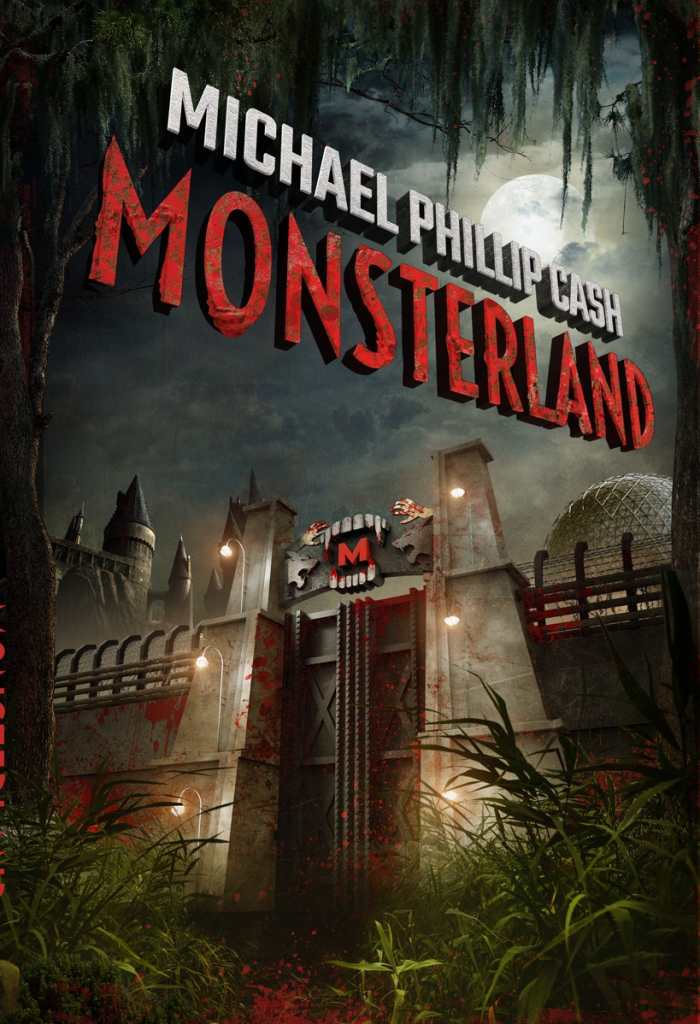
Michael Phillip Cash
Chelshire Inc.
Softcover $12.99 (208pp)
978-1-5171-8067-6
Buy: Amazon
As much fun as Monsterland is, Cash peppers the narrative with real-life significance.
What if vampires, werewolves, and zombies aren’t the monsters we’ve made them out to be? What if the human heart is more monstrous than anything with fur or fangs? So Michael Phillip Cash toys with our preconceptions of scary creatures in his delightfully entertaining novel, Monsterland. Part satire, part coming-of-age story, part genre gore-fest, Monsterland is smart, campy fun.
Wyatt Baldwin is the book’s star. He’s a high school senior with a new stepdad, an annoying little brother, and a huge crush on the most popular girl in school. He spends his days with two geeky friends working at Instaburger in the small desert town of Copper Valley, California. His life and those of his friends change dramatically when business mogul Vincent Conrad decides to open his new theme park in Copper Valley. The park is designed to provide a safe and protected habitat for the world’s dwindling population of vampires, werewolves, and zombies. But when Wyatt and crew visit the much-heralded Monsterland, they find the reality of the park and its keepers disturbing, to say the least.
Unfortunately, the book relies on more than one cliché to push the plot along. There’s the classic geek-gets-girl convention recycled from any number of teen movies: “Not mildly, not slightly—there was no denying it—she was in total overload of obsession for this peculiar boy.” There’s the park itself and its eccentric creator, like a Jurassic Park for Halloween enthusiasts. And, of course, there are cheesy one-liners at every opportune moment. “Where’s Nolan?” one friend asks. “He lost his head over this place,” Wyatt answers sardonically.
Although the plot becomes derivative, Cash is a talented and clever enough writer to imbue his characters with real emotion. That a passage about a half-turned zombie in a detention camp could be moving is a testament to the author’s skill: “Tears smarted his eyes; at least they still functioned. His voice, his tool of the trade, was almost gone. … Now he communicated with a one-note groan that no one understood, and it seemed only to gain him another portion of the bloody gruel they sent in through long pipelines.”
As much fun as Monsterland is, Cash peppers the narrative with real-life significance. The park’s gate reminds Wyatt of the entrance to Auschwitz. The vamps, as they’re called, are treated like a forgotten minority until the park gives them a home. It is this deepening of the plot that elevates Monsterland above standard monster fare. The novel will prove an entertaining and thought-provoking read for both teenagers and adults.
SCOTT NEUFFER (November 13, 2015)
All-Day Breakfast
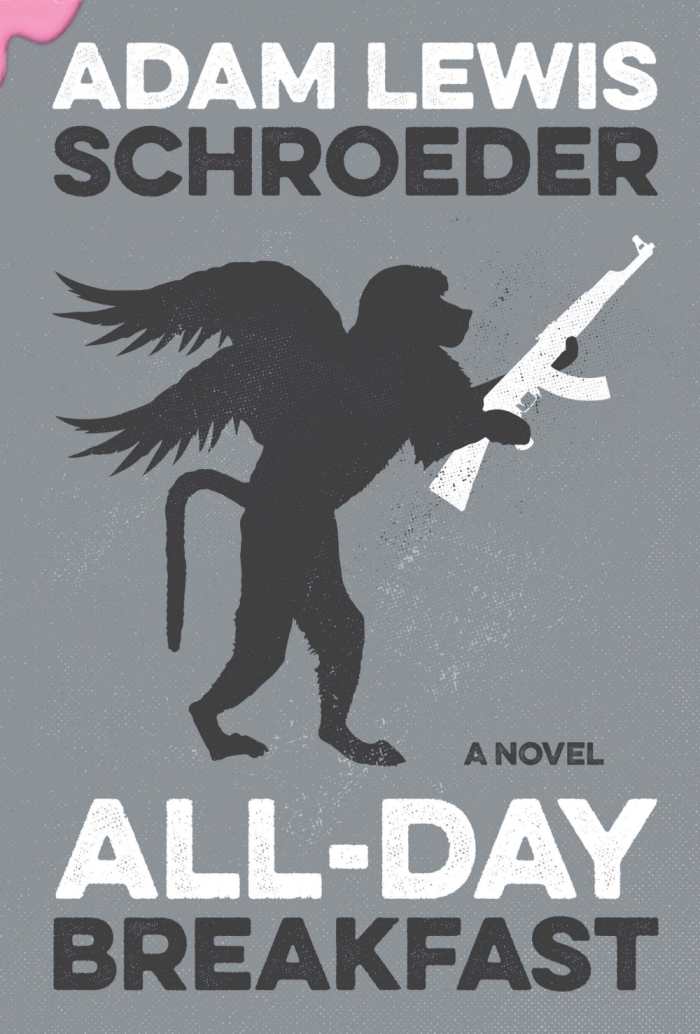
Adam Lewis Schroeder
Douglas & McIntyre
Softcover $22.95 (384pp)
978-1-77162-064-2
Buy: Local Bookstore (Bookshop), Amazon
These zombies crave bacon, not brains, in a humorous adventure ripe with keen social observations.
Adam Lewis Schroeder’s latest, All-Day Breakfast, latches onto the modern zombie fascination and spins a sardonically humorous allegorical takedown of modern corporate greed, military interventionism, and environmental ignorance.
Substitute teacher Peter Giller takes his Hoover High class to visit nearby Dockside Synthetics, a plastics manufacturer in rural Nebraska. There occurs the zombie-generating accident: kids, teacher, and chaperone are splashed with pink globs of transformative goop. The newly minted zombies have an insatiable lust for bacon—not brains. Bacon’s nasty nitrites are key, repairing things like bullet holes through the shoulder. With Peter, students, and chaperone Colleen trailed by shadowy figures, the quest for a cure ranges across Nebraska to Ohio, then to a lab in California before returning to Nebraska.
Peter is a likable a guy who treasures his two kids, especially since he’s been gut-punched by his wife’s recent cancer death. What sets him apart is his clear-eyed yet empathetic view of his high schoolers, zombies or regulars, accepting of quirks and mouthiness, remaining ever loyal and protective of them, especially a boy regularly abused by his father.
The zombie-inducing pink goop is the invention of villainous Kirk Penzler, who discovered a “Bedouin cure-all no one had ever heard of, a kind of gum, a sap” while serving in the first Gulf War. Chewed, it restores tendons, ligaments, and even bone. Penzler’s chemists have warped the exotic gum into an injectable additive to make soldiers into super-soldiers, “Enhanced Personnel,”—let’s not mention armed flying monkeys—for the United States’ latest military expedition against the Congo’s brutal LRA.
Lacing his narrative with sly humor and keen social observations, Schroeder offers solid character development, neat turns of phrase—“I hit the turn signal with philanthropic gravity”—and catchy, often surrealistically humorous, dialogue as human parts fall off and get stapled or nailed back on.
With the type of villain we all love to hate—rich folks driving money-hungry megacorporations to corrupt big government—Schroeder’s penned a zombie adventure ripe with social commentary yet plausible enough to engage non-fantasy fans.
GARY PRESLEY (November 11, 2015)
The Dead of Winter
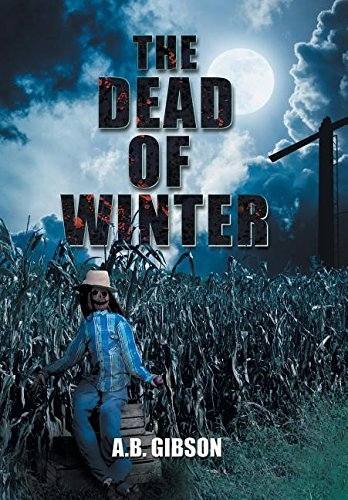
A. B. Gibson
Xlibris
Softcover $15.99 (194pp)
978-1-5144-1564-1
Buy: Amazon
This atmospheric horror novel offers pleasant chills to readers looking for a good, realistic scare.
A. B. Gibson’s The Dead of Winter utilizes vivid settings and intriguing plot developments in the service of an often scary tale.
Four friends come together for a weekend of fun at an idyllic pumpkin patch and orchard. Josh, Julia, Tara, and Dillon, who have known each other since college, arrange to meet their friend Shelly for a weekend at Winter’s Farm. The scenic location and quaint inn seem like the perfect place to relax and catch up, but the family that runs the farm has something far more sinister in mind.
From the beginning, things seem a little off. Josh loses his cell signal on the way and nearly runs down a child wearing a burlap sack on his head. Shelly does not show up and no one can reach her. Carrie, another guest at the farm, seems a little bit crazy, and insists that the Winter family is trying to kill her. As the weekend progresses, strange occurrences lead the group to believe they are all in danger, but leaving proves far more difficult than anticipated.
The Dead of Winter is an enjoyable story, its setting both appealing and realistic. Grainy photographs and drawings scattered throughout the text support eerie scenes. The apparent innocence and charm of the farm is a wonderful backdrop for moments of genuine, spine-tingling fear, as when the group heads out on the haunted hayride through the corn maze: “The Clown hangs onto the back of the wagon rail with one arm…two freakish heads dangle from his free hand. He swings them forward and backward, bashing them against the railing of the wagon, spraying blood and teeth.”
A present-tense narrative makes for limited character development, and the text lacks the backstories necessary for best understanding its characters. As a consequence, their behavior is often difficult to accept. This is particularly true when a passed-out woman is attacked and none of her friends really believe her. Instead, they cling to the belief that the Winter family could not possibly mean them harm.
The conclusion to the book is unsatisfying and abrupt. Not all storylines are resolved, and the fates of certain characters are not explored.
But these frustrating moments do not keep the overall experience of Gibson’s book from being an enjoyable one. Fans of atmospheric horror will appreciate The Dead of Winter. This novel is sure to be a pleasantly chilling way to pass a cold autumn night.
CATHERINE THURESON (February 1, 2016)
Water Ghosts
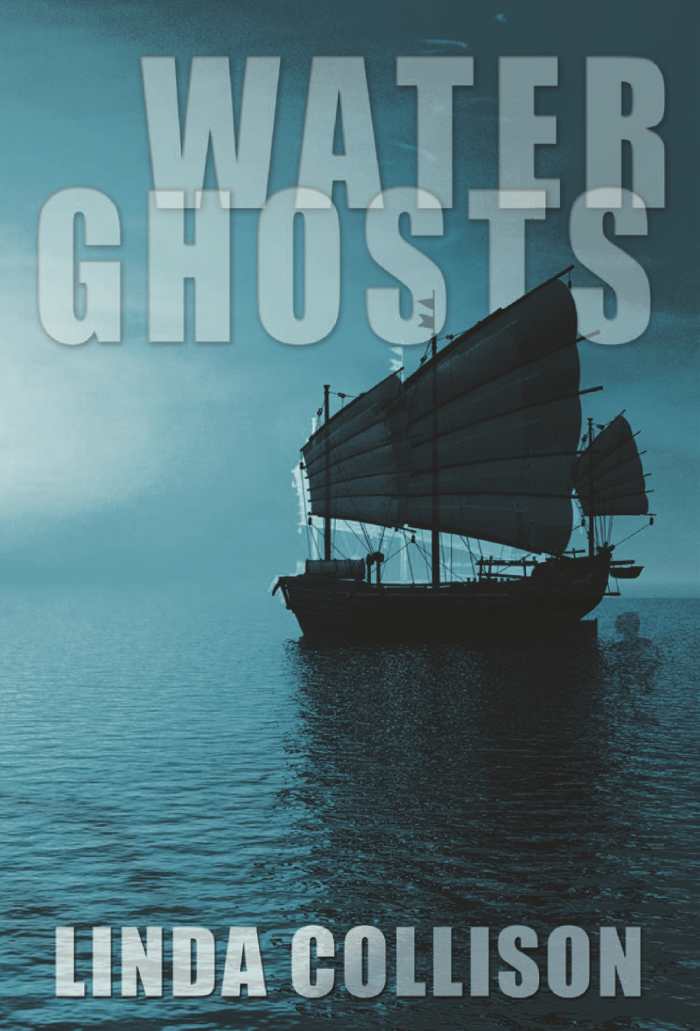
Linda Collison
Old Salt Press
Softcover $14.95 (182pp)
978-1-943404-00-1
Buy: Local Bookstore (Bookshop), Amazon
An ancient Chinese junk packed with delinquent teens and ghosts alike sets off on a dangerous voyage in this fantastic book.
Adventure on the high seas, a Chinese ghost hungry for life, and a setting that’s as dangerous as it is alluring combine to produce a thoroughly satisfying read in Linda Collison’s Water Ghosts.
Narrator James is fifteen when he is shanghaied by his mother, signed up and packed off against his will for an adventurous voyage aboard an ancient (and engineless) Chinese junk. Billed as a character-building trip for troubled teens, the excursion will take James from the safety of Hawaii far across the Pacific to the doldrums, the international date line, and nearly, quite literally, to hell itself—no cell phones or electronics allowed.
The author has a wonderful feel for teens, and James and his fellow passengers emerge as more misunderstood than delinquent. With a new boyfriend in tow, James’s mother views him as an inconvenient third wheel; Ming’s wealthy and successful adoptive parents have shelved her because she hasn’t turned into a child prodigy; weapons-obsessed Truman is simply a socially inept nerd who likes to see how guns and catapults work. Even the group bully isn’t as much of a thug as he pretends to be. Everything might go swimmingly if it weren’t for one little problem: James knows the ship is doomed. Ghostly voices and visions have revealed a horrifying fate to him, one that unfolds slowly across the long nautical miles.
The slow build of tension is one of the book’s delights. Collison, an experienced sailor, captures the vast eeriness of the ocean, weaving in references to true-life murders and vanishings at sea. A trip into the dark hold for supplies means venturing among ghosts packed in like sardines and struggling to escape and take possession of the healthy young bodies on deck. When Yu, the centuries-old spirit of a Chinese eunuch, tells the story of his hopeless attachment to a concubine fated to die with her emperor, his hypnotic narrative nearly costs James his life. The pace gradually accelerates to a page-turning finale with enough twists and turns to keep readers off guard, and the doomed junk finally does fulfill its advertised promise to provide a character-building experience.
James’s voice is relatable and often laced with sarcastic teen wit. With this leavening, believable characters, a well-constructed plot, and writing that avoids all the possible clichés, Water Ghosts should appeal not only to teens but to adults looking for a jolt of adventure or a reminder of what being a teen feels like.
SUSAN WAGGONER (October 13, 2015)
Anthology of Horror in F-Sharp Major
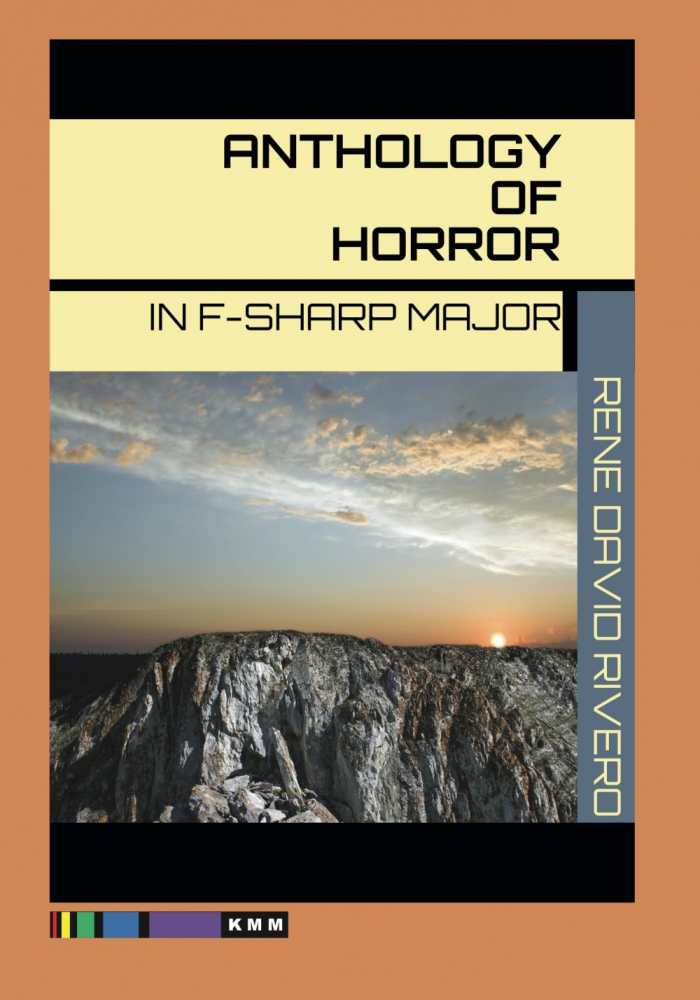
Rene David Rivero
Krypto Morph Media
Softcover $9.99 (216pp)
978-0-615-88876-7
Deft descriptions of darkness and action add dread to these daring sci-fi, horror novellas.
People wake up from their isolation, stupor, or loneliness only to see the world’s real horrors in Rene David Rivero’s wide-ranging short story collection. Though Rivero conveys the dread early on, the joy is watching the symphony of descriptions accompanying these action-packed novellas.
Five stories are spread across a diverse array of settings: a Colorado homestead, an Arctic Ocean expedition, and New York City. A couple leaves the safety of their home to hunt down the infamous Wendigo, a student is undone by his ambition and thoughts about consciousness, and half-men fight half-animals.
Though suspense and horror merge in this collection, with a slice of sci-fi on the side, the descriptions are not too graphic or over the top. Rivero shows restraint and understands how to tow the line. This makes the book frightening and effective. The reader can only imagine what the character is screaming about at the end of “Pawnee Buttes.”
Rich descriptions bring the terrain to life. In “Transformed,” the land shifts as much as the characters. Rivero writes how, “With a shot, the crack parted and spread like a mouth forming a grin round and round and round—the onyx of ocean burst through to clash against the ivory of ice.” Darkness and the personification of the world comes into play again in “The Business in Apartment H.” Rivero describes how, “At five the sun plunged and the sky grieved with the color of onyx.”
These novellas average around fifty pages each. Though some pieces feel complete, like “The Business in Apartment H,” others, like “A Curiosity of Time and Space,” could be lengthened into full-fledged novels. Though they are rich in action, large chunks of summary can seem overwhelming, and adding missing commas after introductory clauses could have smoothed out some pacing issues and minor confusion.
Obsessions rule these characters. Some are trying to escape isolation or find creativity, whereas others feel compelled to seek out adventure or hunt down fabled monsters. In each story, the characters are not waiting for death but “a birth, a new and different kind of life” where “chaos [stands] as the only true constant.” Scenes are well placed, though dialogue tends to explain the stories rather than add to characterizations.
The sheer range of genres is what makes this collection so rich. There is something for everyone here, and Rivero’s restraint will keep readers guessing.
LISA BOWER (November 14, 2013)

Hannah Hohman is associate editor at Foreword Reviews. You can contact her at hannah@forewordreviews.com.
Hannah Hohman
